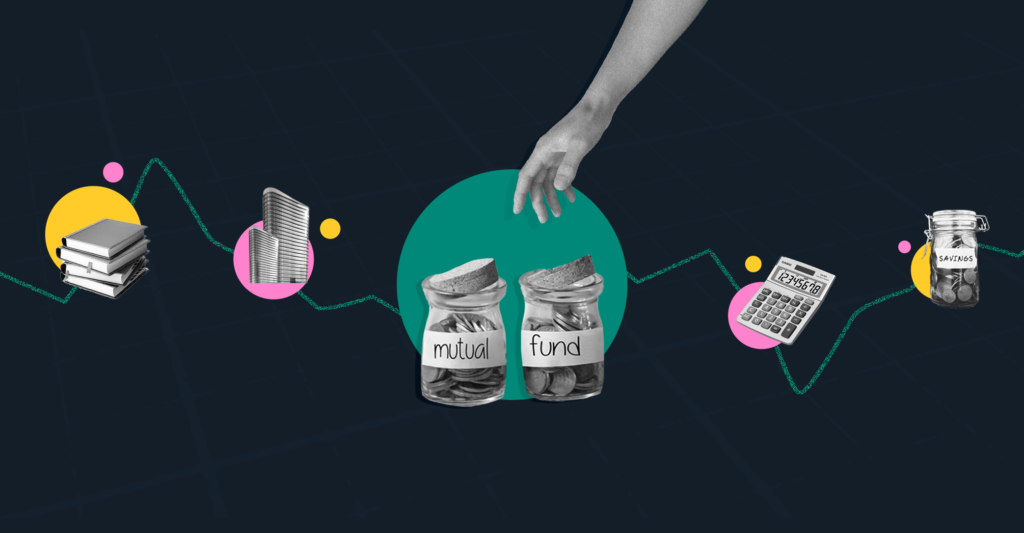Last Updated on May 24, 2022 by Aradhana Gotur
One of the most important investment vehicles in the market – mutual fund, is an investment scheme where the funds of several investors are pooled together and invested in a range of assets that help achieve the mutual fund’s overall financial objectives.
These are good investment products for people with limited to no financial knowledge who want to start investing. They have traditionally been a sought-after investment avenue for investors looking for ways to grow wealth and beat inflation in the long run. In fact, mutual funds may be able to deliver value as an investment option for both inexperienced and seasoned investors.
The greatest benefit of investing in mutual funds is the fact that the investor’s funds are managed by a professional and experienced fund manager. However, with hundreds of mutual funds in the market, it can get overwhelming for an investor to zero down on a fund that matches their investment objectives. This article will help you demystify how to choose a mutual fund that’s the right fit for you.
Table of Contents
How to get to selecting a mutual fund?
Here are some of the pointers to keep in mind when selecting a mutual fund:
Investment objective and goals
The first rule of thumb before making any investment is to identify your overall investment objective. Identify what your financial goals are and the time horizon you have to achieve them. It is your end financial goal that will determine your investment strategy. Are you investing in mutual funds to save tax or to meet a short-term requirement of funds? These questions need to be answered to set the foundation of your investment.
For example, should your goal be capital appreciation along with tax saving, you already have your choice cut out for you as ELSS funds. Should your goal be to save towards your retirement, you have more flexibility and may consider equity-oriented funds. However, should your priority be capital preservation and you don’t want to take on a lot of risks, then maybe debt funds or index funds could be better options. You will be able to sort through the mutual fund universe more easily when you recognise your end goals.
Investment strategy
A crucial step when looking for the right mutual fund is the investment approach. Understand the investment strategy of the fund house that manages the mutual fund you are aiming for.
Make sure that the investment strategy of the AMC is in line with your investment philosophy and intent. It is important to ensure that your investment goals are in tandem with that of the mutual fund so that you know what you are getting into.
Risk appetite
Risk, by far has to be one of the most important aspects to consider when selecting a mutual fund. Investors must analyze their risk profile and then understand the risks associated with a particular mutual fund scheme.
For instance, if you have a low-risk appetite, you might consider more stable options such as debt funds or large-cap mutual funds. Whereas, if you have a higher risk appetite, you may prefer midcap or smallcap equity funds as they have a potential for higher returns at the cost of higher volatility and risk.
Time horizon
An important aspect to consider when searching about how to select mutual funds is what is the time period that you can stay invested in the scheme. Depending on your investment horizon, the type of mutual fund would change.
For example, if you are looking for investing for a short period of time, then a short duration liquid fund may be considered. For long-term goals, you can opt for a market capitalization focused fund that may be able to deliver higher returns over time.
How to select a mutual fund?
Below are some key parameters that you may use to evaluate your options when you are wondering how to select a mutual fund.
Fund Performance
When picking a mutual fund to invest in, it is important to track the performance of the fund in the previous market periods. This can help the investor determine the fund’s ability to preserve your money in times of market volatility and get a fair picture of the consistency of the fund. However, potential investors must assess the fund’s performance over the longer term and not just in the short term to get a broader picture.
Consistency of returns
Apart from the fund’s overall performance, investors must also check the mutual fund’s ability to return with consistency over the years. A fund may be recommended or highlighted because of stellar performance in one period. However, it is also possible that the good performance was a one-off event for the fund! The opposite is also true. It is quite possible that a slump in the market led to the poor performance of a fund for a particular period. Assessing the consistency of returns will indicate the fund’s proficiency to deliver results less affected by market conditions.
Comparison with other funds
The performance of your chosen fund must also be compared with funds in the peer group. It is important here to make apple-to-apple comparisons. An ELSS fund cannot be compared with a largecap fund even though their composition may be similar. An ELSS fund must be compared with another ELSS fund alone.
Peer comparison helps assess where the fund stands against others in the market. For instance, a mutual fund ‘ABC’ gave an annual return of 25% in the first year and the returns in the second year spiked to 32%. A peer mutual fund ‘XYZ’ gave an annual return of 53% but the second year returns tanked to 11%. In this case, mutual fund ABC may be considered a better fund given the consistency in the delivery of returns despite lower performance in the first year.
Fund manager
Fund managers are responsible for the performance of the fund and its daily operations. It is the fund manager who makes the key decisions from picking the stocks for the fund to how the funds are allocated and invested. They are in charge of the overall efficiency of the fund.
In essence, a mutual fund’s performance is reflective of the capability of a fund manager. Hence, the background and the experience of the fund manager in the business could be an important factor to consider when shortlisting the best mutual fund for your portfolio.
Expense ratio
Expense ratio is the fees charged by the Asset Management Company (AMC) from the investors for management of the mutual fund. It includes the maintenance fees, administrative fees, and other expenses that are required in the functioning and operations of a mutual fund by a fund house.
Ideally, investors should look for mutual funds that have a low expense ratio. A low expense ratio helps maximize your returns from the mutual fund because the NAV of the fund is deducted for the expenses and the return you get is the market return minus the expense ratio.
When evaluating a mutual fund, look for one with a low expense ratio to maximize returns. Because the return you get is adjusted for the expense ratio Click To TweetEntry and exit loads
Entry load is the fees that fund houses charge investors to begin investing in their mutual fund. Similarly, exit load is the fees that fund houses charge investors when they exit their mutual fund scheme before a particular period. Although a minimal percentage, it can still impact your returns by increasing the cost of your investment.
AUM
AUM or Assets Under Management is the total value of assets that a fund house manages. AUM indicates the returns a fund has made on its investments along with the capital, which a fund manager has at his disposal to make new investments. An increasing AUM is often seen as a positive parameter. It is however important to note that AUM should not be looked at in isolation when choosing the right mutual fund. All the parameters mentioned above must also be considered along with it.
Conclusion
With a range of factors to ponder upon, selecting a mutual fund to invest in can seem like a herculean task, but a little research can help you go a long way.
It is important to scrutinize each and every little detail and factor to make sure that you’re putting your money in the right scheme which is in line with your objectives and financial goals. Like all other investment products, mutual funds also carry their own risks. However, choosing the right mutual fund that checks out all the boxes can help you minimize the risk and maximize the returns.





